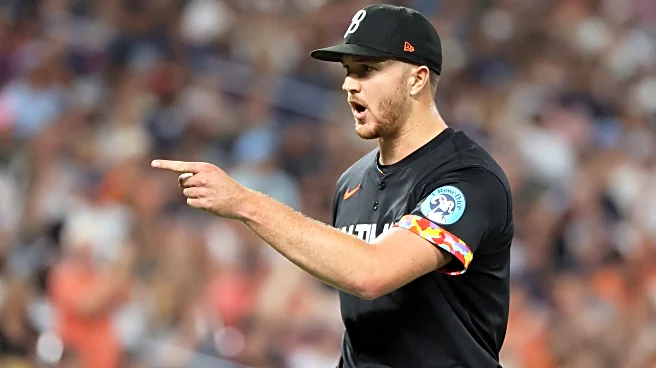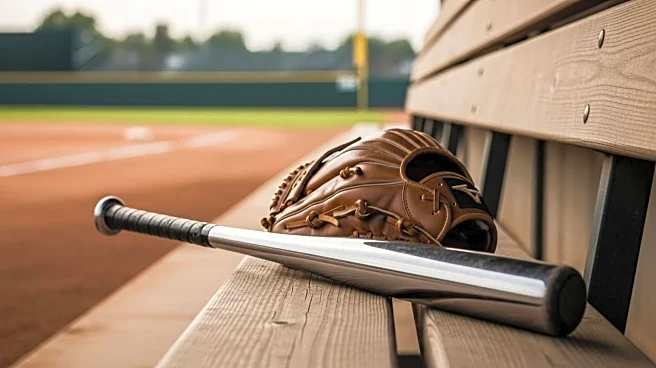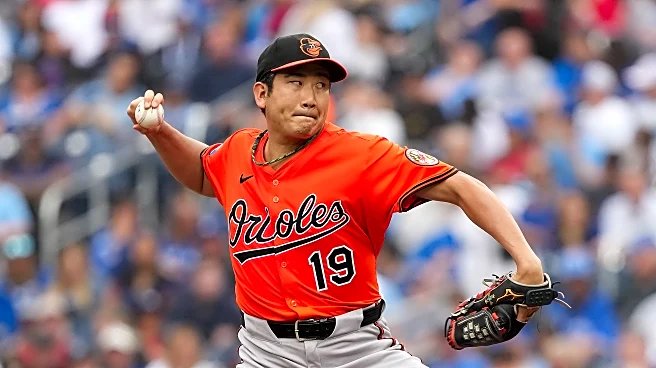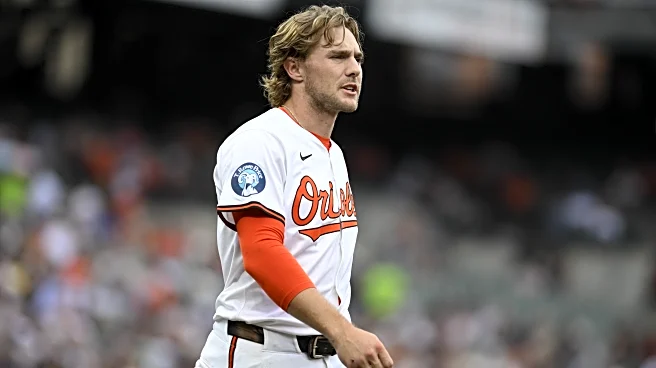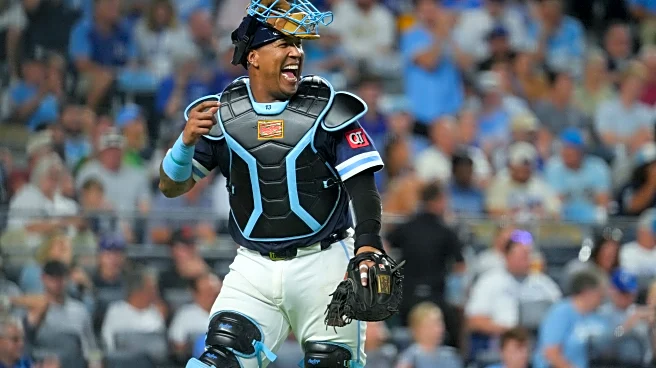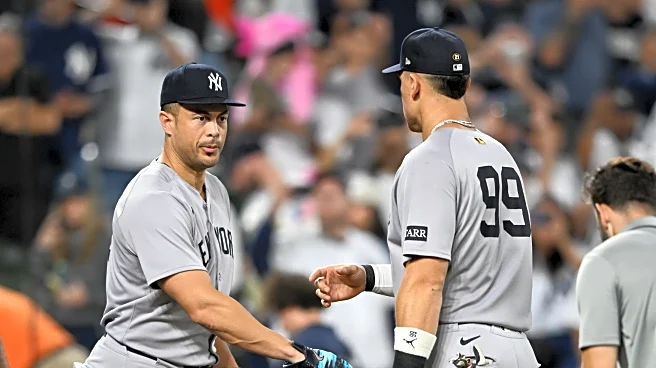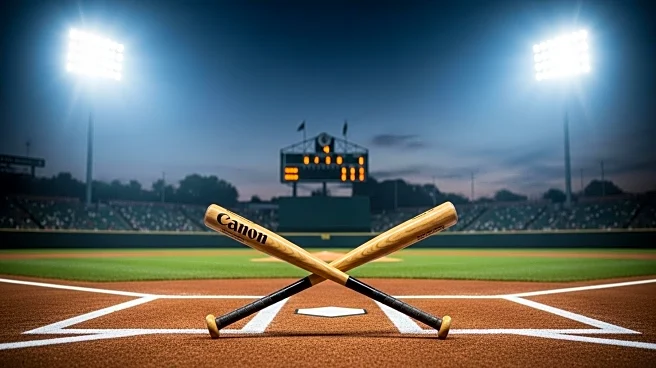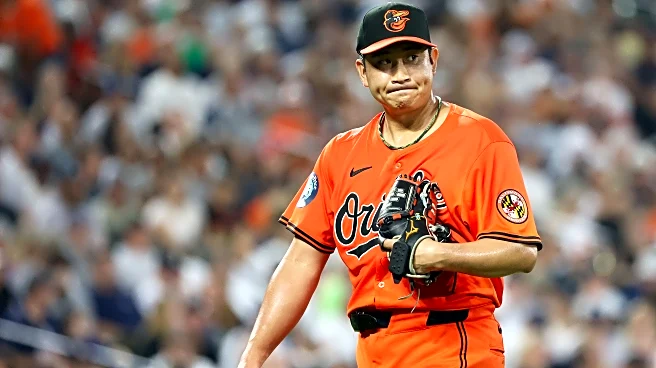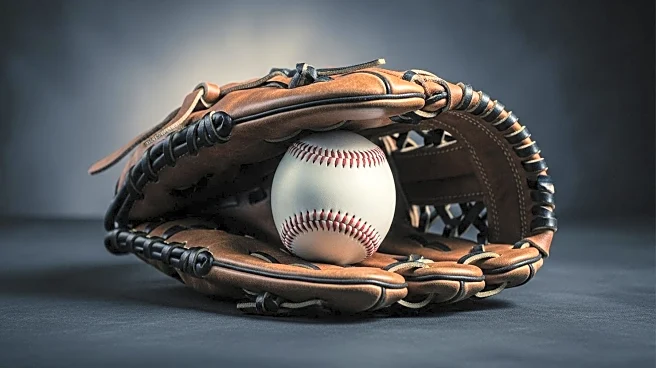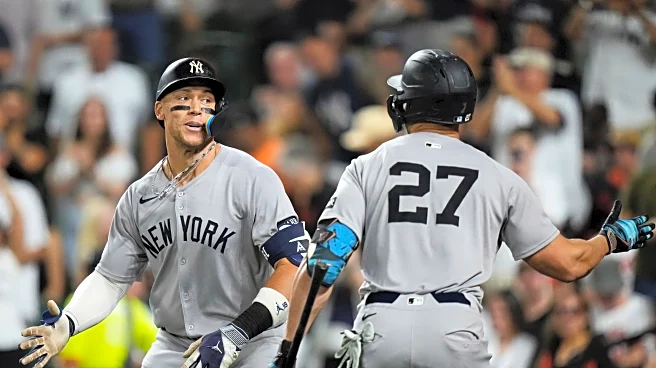There’s been one thing from this year’s Orioles that has always given me joy: watching Trevor Rogers take the mound every five days. Against the backdrop of an immensely disappointing 2025 season, Rogers’
metamorphosis from failed redemption project to true top-line starter has been a joy to watch.
Through 17 starts this season, Rogers has put up numbers that, at times, are still hard to believe. Through 106.2 IP across those 17 starts, the Orioles’ left-hander is sporting a 1.35 ERA, 0.87 WHIP, 5.65 H/9 rate and a .178 BAA. The ERA and H/9 rate would set new franchise records, while his WHIP would be the second-best ever, IF Rogers had enough innings under his belt to qualify for the ERA title.
That caveat of a relatively small sample size is what can make Rogers’ brilliance so hard to contextualize. Many in Birdland view him as a worthy contender for AL Cy Young. Rogers’ per-game numbers stack up really well against other top AL pitchers like Tarik Skubal, Garrett Crochet and Hunter Brown—with the Orioles ace besting all of them in ERA and WHIP.
However, each of Brown, Crochet and Skubal has over 180 IP this season, while Rogers has barely crossed over the 100-inning threshold. The only American League players who won a Cy Young with less than 150 IP were Dennis Eckersley, Willie Hernández and Rollie Fingers—who were all closers in their award-winning seasons.
Comparing Rogers to other top starters—both this year and historically—is a bit like comparing boxers from different weight classes. Look at Floyd Mayweather’s record in a vacuum and there’s a strong case for best fighter of all-time. But put Mayweather in a hypothetical fight against Muhammad Ali, and it’s hard to argue that Mayweather would come out on top. With Rogers, the difference between him and other pitchers isn’t weight, but the weight of 80 fewer innings pitched.
The same sample size arguments come into play when comparing Rogers to other Orioles greats. With one start left in his 2025 season, Rogers has a 6.0 bWAR, good enough for the 10th-best season in Baltimore baseball history. The only names he’s trailing are Jim Palmer (six seasons in the Top 10), Mike Mussina (two seasons) and Hoyt Wilhelm’s iconic 1959 season. While just being mentioned among three of the franchise’s best pitchers is a monumentous achievement, we’ll take a crack at making Rogers’ case against the best seasons in franchise history.
Rogers case vs. Jim Palmer
Jim Palmer is not just the best pitcher in Orioles history, but also delivered the best season in Orioles history by bWAR. Palmer’s 1975 season saw him set a franchise record with 8.4 WAR, while putting up a career-high 323 innings, a career-low 1.03 WHIP and career-bests with 10 shutouts and a 169 ERA+. All of that culminated in the second of Palmer’s three career Cy Young awards.
Palmer had five other seasons with a bWAR above six, including his other Cy Young seasons in 1973 and 1976 and a Cy Young runner-up finish in 1977. Palmer put up his career-best ERA of 2.07 in 1972, his career high in strikeouts (199) in 1970 and his best-ever BAA against (.200) in 1969.
Comparing Rogers to any of Palmer’s best seasons only highlights the 27-year-old’s lefty’s lack of innings. During Palmer’s six best seasons, he averaged over 300 innings per season. At best, Rogers will get to 115 innings this season. And yet, there are still some categories where 2025 Trevor Rogers bests anything Jim Palmer ever did.
Despite not being thought of as a “strikeout pitcher” by modern standards, Rogers’ 8.4 K/9 rate is two strikeouts higher than Palmer’s best. Rogers currently also has a lower BB/9 (2.19) than Palmer’s career best from 1975 (2.23). The massive disparity in innings makes Rogers’ advantage in opponent average and OPS seem a little hollow, but the lefty’s current opponent OPS of .473 is more than 100 points lower than Palmer’s career best mark.
Rogers case vs. Mike Mussina
Unless Rogers implodes in his final start of the season (tentatively scheduled for this Friday in New York), he’ll likely surpass Mussina’s 6.1 bWAR from the 1995 season. What Rogers can’t hope to touch is the 8.2 WAR Mussina compiled in the 1992—which was good enough for the second-best pitching season by WAR in Orioles history.
Like Palmer in 1975, Mussina set a then-career high with 241 innings in 1992. He also put up a career-best 2.54 ERA and career-high 157 ERA+. Mussina’s success came in a much different fashion than what we’ve seen this year from Rogers. In ‘92, Mussina set a career-high with a 31.2% fly-ball rate, while also setting a career-low with a 0.6 HR/9 rate. Mussina won by getting a lot of lazy fly balls while limiting walks and extra-base hits. In a turn of events that is completely foreign to the current style of baseball, Mussina also accomplished his best season while setting a career low in strikeout rate.
Rogers, conversely, has always been at his best as a ground-ball first pitcher. This season has only served to emphasize that, as he’s served up a career-low fly ball rate (23.6%) while maintaining a 46% ground ball rate. Like with his case against Palmer, Rogers blows Mussina out of the water with his strikeout rate. The biggest advantage that Rogers has in his case against Mussina is the difference in their slugging percentage against. In 1992, Mussina put up a career-best opponents’ slugging at .348. Rogers currently sits over 100 points lower at .239.
Rogers case vs. Hoyt Wilhelm
When Hall of Famer Hoyt Wilhelm put up a 7.6 bWAR season in 1959, Brooks Robinson had yet to win a Gold Glove and Cal Ripken Jr. had yet to be born. It was a statistical outlier in the knuckleballer’s career, as it was the first and only time Wilhelm made more than 15 starts in a season. He responded to the Orioles’ experiment of moving him into the starting rotation by winning the AL ERA title with a 2.19 mark and tossing 13 of his 20 career shutouts.
Rogers beats Wilhelm’s ‘59 season in just about every stat besides innings pitched and total strikeouts. For much of the year, the start of Wilhelm’s career year was used as the measuring stick for Rogers’ breakout. Through his first 12 starts in 1959, the Hall of Famer had a 1.00 ERA and 1.02 WHIP. Sixty-six years later, Rogers had a 1.41 ERA and 0.80 WHIP. After 17 starts, the advantage has flipped squarely to Rogers, who now has a 1.35 ERA and 0.87 WHIP, compared to Wilhelm’s 1.96 ERA and 1.15 WHIP through 17 starts in 1959.
Given Rogers’ improbably excellent run over his 17 starts in 2025, many will cast blame on the Orioles for not bringing him into the fold sooner. And while that decision may have cost Rogers a real chance at this season’s AL Cy Young, he is still the thing the Orioles got most right in 2025.

